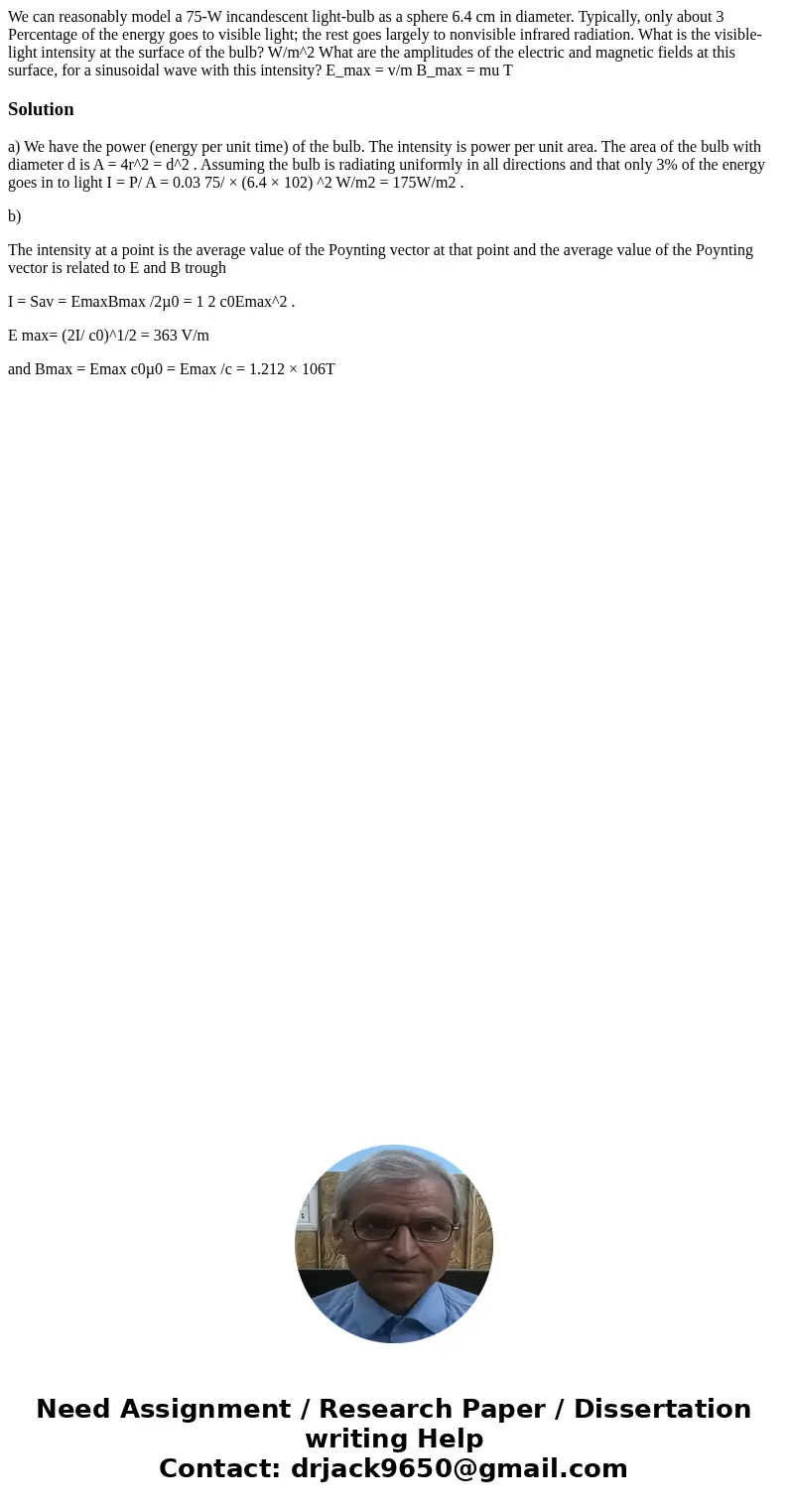We can reasonably model a 75W incandescent lightbulb as a sp
We can reasonably model a 75-W incandescent light-bulb as a sphere 6.4 cm in diameter. Typically, only about 3 Percentage of the energy goes to visible light; the rest goes largely to nonvisible infrared radiation. What is the visible-light intensity at the surface of the bulb? W/m^2 What are the amplitudes of the electric and magnetic fields at this surface, for a sinusoidal wave with this intensity? E_max = v/m B_max = mu T
Solution
a) We have the power (energy per unit time) of the bulb. The intensity is power per unit area. The area of the bulb with diameter d is A = 4r^2 = d^2 . Assuming the bulb is radiating uniformly in all directions and that only 3% of the energy goes in to light I = P/ A = 0.03 75/ × (6.4 × 102) ^2 W/m2 = 175W/m2 .
b)
The intensity at a point is the average value of the Poynting vector at that point and the average value of the Poynting vector is related to E and B trough
I = Sav = EmaxBmax /2µ0 = 1 2 c0Emax^2 .
E max= (2I/ c0)^1/2 = 363 V/m
and Bmax = Emax c0µ0 = Emax /c = 1.212 × 106T

 Homework Sourse
Homework Sourse